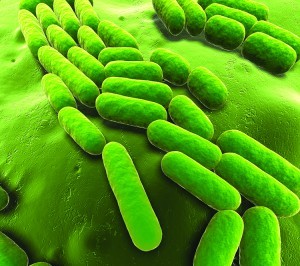Aesthetic medicine is dedicated to satisfying the aesthetic goals of patients, while optimising outcomes and minimising adverse events. Soft tissue fillers are now the second most commonly performed minimally-invasive procedure in aesthetic medicine. Hyaluronic acid (HA) is the most abundant glycosaminoglycan in the human dermis, and it is the injectable biomaterial of choice for this use. Procedures using HA fillers are predicted to increase in frequency by 8–12% per year in North America alone1. A primary challenge for manufacturers of soft tissue fillers has been to obtain HA of high quality and purity. HA is currently derived from three sources: the rooster comb of male chickens, the bacterium Streptococcus equi subsp zooepidemicus, and — most recently — the bacterium Bacillus subtilis, first available in 2011. The B. subtilis-derived HA process allows for a high level of purity and a homogeneous end-product because it does not require the use of powerful organic solvents to extract it from the bacterial capsule, in contrast to the process required for Streptococcus-derived HA. Adverse events are generally injection-related and not serious or systemic. B. subtilis-derived HA is well placed in the market to complement existing sources of HA used in soft tissue fillers.
Aesthetic medicine is focused on satisfying the aesthetic desires and goals of patients. Procedures in this area are generally elective and are dedicated to the dual goals of optimising patient outcomes and minimising adverse effects.
This rapidly emerging specialty is primarily focused on the pathophysiology and mechanobiology of facial ageing and adheres to science and evidence-based outcomes. Health professionals practicing aesthetic medicine (dermatologists, plastics surgeons, and other aesthetic medicine providers) are trained in both invasive and non-invasive treatment modalities, and typically use a combination of both to meet the needs of the patient.
Biomaterials and their aesthetic application
The International Union of Pure and Applied Chemistry (IUPAC) defines biomaterial as ‘material exploited in contact with living tissues, organisms or microorganisms’2. However, a clearer definition may be ‘any synthetic material that is used to replace or restore function to a body tissue and is continuously or intermittently in contact with body fluids’3.
There are many different types of materials (metals and alloys; ceramics and glasses; polymers; composites) that can be used in a variety of medical or dental settings2. Biomaterials used within the field of minimally‑invasive aesthetic medicine are typically injectable.
An ideal injectable biomaterial used as a facial soft tissue filler should be non-allergenic, non-carcinogenic, non-immunogenic, non-migratory, and non‑teratogenic4, 5. An ideal injectable biomaterial should also be reversible, long-lasting but not permanent, and versatile in its application, and it should possess reproducible safety outcomes4, 5. Hyaluronic acid (HA) demonstrates all of these beneficial attributes; therefore, it is currently the biomaterial of choice in aesthetic medicine.
The link: HA and aesthetic medicine
HA, a complex sugar, is the most abundant glycosaminoglycan in the human dermis5. Approximately half of the 14–16 g of HA in the human body is found in the cell surface and extracellular matrix of the skin6. It is the major component of the vitreous humour in the eye (0.1 mg/mL), and large concentrations are found in the cartilage and synovial fluid of the joints.
HA can be considered to have both biological and mechanical functions in the human body6. Biologically, it regulates cell proliferation and migration, as well as angiogenesis5. In a mechanical capacity, HA maintains volume by drawing water into the skin and other structures; it also cushions, protects, and supports by binding collagen and elastin fibres5. Aesthetic medicine uses the mechanical properties of HA with the aim of restoring this function that may degenerate over time. HA-based soft tissue fillers are typically used in the face in such areas outlined in Table 1. Other, less common areas of treatment include reshaping the nose, recontouring the forehead, and revolumising earlobes. In addition, HA fillers have been used to rejuvenate the hands and the décolletage8.




